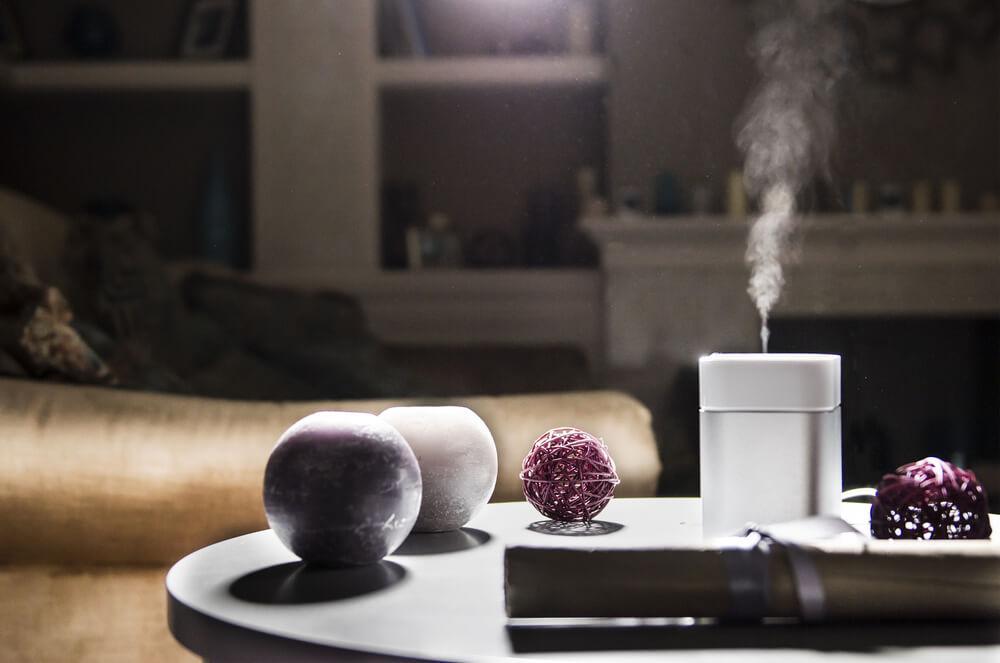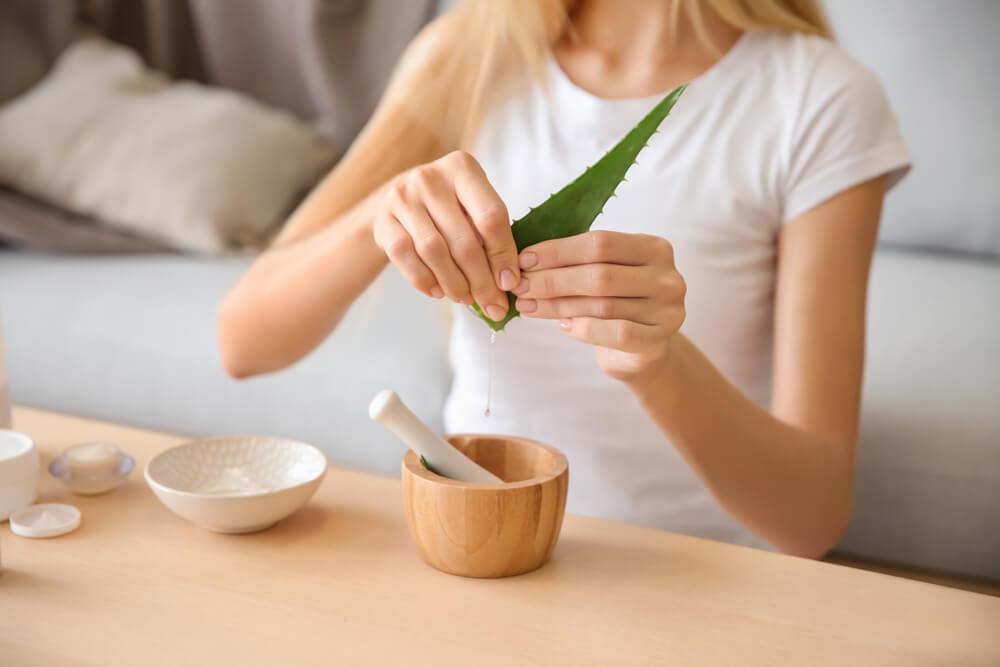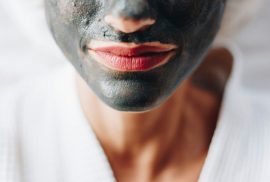How to Deal with Dry Skin in the Winter

Despite your efficient skin care regimen, you might find your efforts failing when the weather is cold and dry, a characteristic of winter.
The rough, raw, cracked and itchy feeling usually referred to as the winter itch is common during this season. Besides the discomfort that winter itch brings about, the unsightly tell-tale signs don’t exactly help with your appearance.
There’s a brighter side; you don’t have to endure the ordeal!
Here’s how to deal with dry skin in the winter.
Notch Up the Humidity in Your Home

From the above information, we can deduce that drier air means drier skin. This can be taken care of by increasing the moisture in the air especially in places where you spend much time like the bedroom.
The best way to do this will be to use a humidifier. This comes with added advantages of relieving respiratory congestions and cold symptoms. Some heating systems have it already so it is good to check if yours does.
Set the humidifier at 60% to counter the drying effects and while at it, ensure that the heating system is not set too high.
Keep Showers Lukewarm and Short
When it is cold, the urge to take hot showers and to linger a little bit more in the shower is irresistible. However, as good as it may feel, it may work against you. Hot water easily strips away the protective layer of oil so the more time you spend in there, the more you are likely to strip more.
Shower using lukewarm water and make your shower time about 5-10 minutes. While showering, closing the door keeps moisture from evaporating from your body while using a mild cleanser and a lighter touch on wash clothes or bath sponge can help in not stripping the protective layer off your skin. Once you are done, use a towel to pat your skin dry as opposed to rubbing it.
This should be immediately followed by applying a moisturizer while the skin is still damp to seal in the moisture.
Use Sunscreen
Do you really need sunscreen in winter? Yes, don’t be deceived by the low temperatures; the sun’s UVA rays are as strong and active as ever. Besides exposing you to the risk of skin cancer, the harmful rays penetrate into your skin and age it by causing wrinkles and reducing your skin’s elasticity.
The rays are more intense at high altitude places so you need to be extra careful if you are snowboarding, skiing or hiking. Besides this, snow can reflect the sun’s rays and give you a sun burn
These effects can be even more devastating on dry skin; the last thing you want is a combination of dry and sun damaged skin. Lather on moisturizing sunscreen of SPF 30 or above.
Give Your Hands Extra Care
Your hands will probably be the first to indicate dry skin because of the thin skin and the fact that they are exposed most of the time. They are therefore likely to suffer even more. You can protect your hands by wearing gloves when you:
- Venture outside
- Go to sleep
- Need to do something that will make them wet
- Handle chemicals and other strong substances
It is also important that you moisturize your hands every time you wash them to immediately to seal in the moisture. The Vivo Per Lei Green Apple Hand & Body Lotion is great for doing this.
Moisturize your Skin Immediately After Showering

Moisturizers work by either binding moisture that is already in your skin to prevent it from escaping or replacing moisture that has been lost back to the outer layer of the skin. Moisturizers are best used immediately after taking a shower, usually within 3 minutes, before moisture escapes from the skin.
Use these tips to help you choose the best moisturizers:
- Creams and ointments are more effective and less irritating than lotions and especially if they contain oils such as jojoba, olive and Shea butter.
- Look for products with ingredients such as Lactic acid, Hyaluronic acid, Petrolatum, Urea, Lanolin, Glycerin and dimethicone which soothe the feel of your skin besides providing a host of other benefits.
- Keep away from products with alcohol, retinoids, fragrance, AHAs and anything that might irritate your skin since dry skin tends to be overly sensitive.
Exfoliate Your Skin
When the skin is dry, exfoliation may sound harsh but without it, the flaky-looking skin may lead to a buildup which can lead to break outs or even hamper the penetration of moisturizers.
On the other hand, you don’t want to worsen the situation so you should go for a mild exfoliator or better still, an oil-infused one. Also, keep away from products with beads and or grains that may tear your skin. If the condition of your skin is too severe, use a wash cloth instead to gently get rid of skin flakes.
Change Up Your Diet
Altering your diet to fix your skin may sound drastic but believe it or not, you can actually nurture a smooth and supple skin from within. This is not only cheaper but also natural and effortless.
Foods that contain Omega 3 fatty acids, Silica, vitamins A and E, Zinc and antioxidants are great at combating dryness in your skin. They work by inducing collagen, retaining moisture, strengthening the skin barrier, protecting the skin from UV damage and aging, reducing inflammation and repairing skin cells.
The foods that you can include in your diet include fatty fish, sweet potatoes, olive oil, nuts, avocadoes, oysters and cucumbers among others. These should however be used in combination with your skin care routine.
Try DIY Masks

When you are battling dry skin, you need all the help that you get. What is a better way to get this than the use of ingredients that you can easily find in your kitchen cabinet or the local convenience store? Some ingredients are known to soothe and hydrate the feel of your skin when used in masks.
While you might not do masks every day, having them twice or once weekly can complement your other efforts. Some of the masks that are known to work are:
- Honey and Coconut mask- honey hydrates the skin and offers anti-bacterial benefits while virgin coconut oil moisturizes and hydrates your skin without leaving it oily. 2-3 drops of lavender essential oil can add a pleasant fragrance.
- Banana, Turmeric, and Yoghurt mask – the banana fruit is rich in potassium and vitamins E and C that restore and hydrate the feel of the skin while yogurt relieves the look of dry skin.
- Aloe Vera and Milk Cream mask– Aloe Vera soothes the feeling of irritated skin. Milk cream on the other hand is rich in fats that moisturize the skin.
- Egg Yolk and Olive Oil Mask- Egg yolk is rich in fatty acids and Sulphur that help in moisturizing and adding the appearance of elasticity to your skin while olive oil moisturizes your skin without making it oily.
These are just but a few examples of the numerous DIY masks that you can do in the comfort of your home.
Cover Up When You Go Out
Dressing warmly in winter is out of question. Scarves, beanies, coats and boots among other winter clothes now have an opportunity to shine. Dry skin during winter calls for more than just warm clothes; a careful selection of clothes that will not only protect you from the elements but also not cause further damage to your already suffering skin.
Here are a few tips to guide you
- Wear a scarf to protect your neck, part of your face and nose
- Keep off woolen clothes; they tend to irritate your skin while nylon, rayon, polyester and nylon may make you feel itchier because they are less breathable
- Go with cotton which is more favorable
- If you wear wool, go with merino wool or pair it up with a light layer of cotton underneath
Protect Your Lips
Dry chapped lips are one of the most common signs of dry skin. To keep them feeling protected, wear lip balm that feels comfortable on your lips. You should keep away from any products that sting or tingle when you apply as they can make the situation worse.
Use lip balm throughout the day or as you need it and ensure that you have a handy tube with you as you venture out, just in case you need it. The Refreshing Mint-E Lip Balm from Vivo Per Lei is a great choice!
To reinforce the effort especially when you are outdoors, you can apply a layer of petroleum jelly. While at it, resist the urge to constantly lick your lips as this further dries them.
You don’t have to battle skin that looks dry, flaky and hideous just because it is winter. Taking any or a combination of the above measures will take you a step closer to having skin that feels moisturized, healthy and smooth through the season. It is better if you can start way before the season but if you are caught off-guard, you can still do something about it. Your greatest tools will be patience, consistency, and of course the willingness to try out several until you come up with several that work for you. If your efforts don’t bear fruit, however, maybe it is time to consult a dermatologist.





